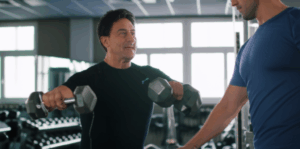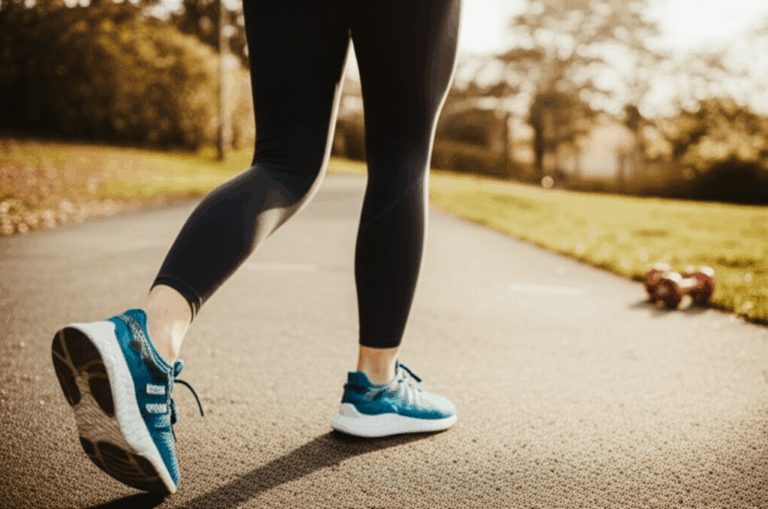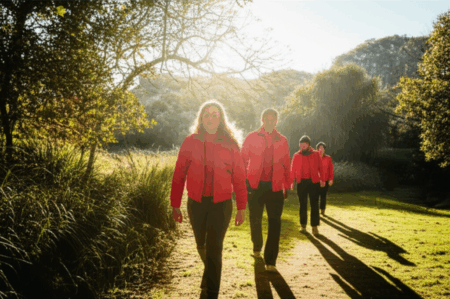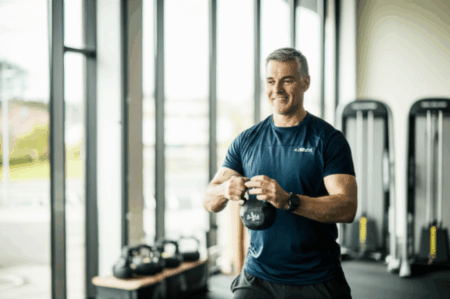As the seasons shift, many find themselves looking for an effective way to “fall back into fitness.” Whether you’re returning to exercise after a break or kickstarting a new wellness journey, a well-structured 30-day walking and strength plan offers a powerful, accessible, and sustainable approach to rebuilding your health. This comprehensive guide will equip you with a progressive routine designed to boost your cardiovascular health, build foundational strength, and cultivate lasting fitness habits.
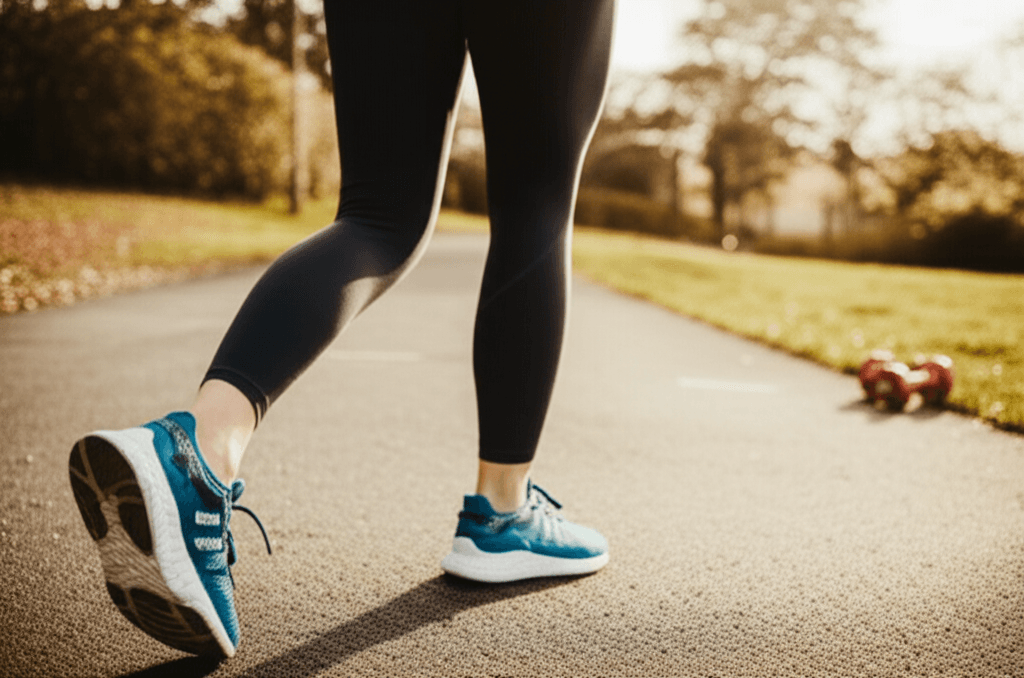
Why Combine Walking and Strength Training? The Dual Benefits
Integrating both walking and strength training into your routine provides a synergistic effect, offering a broader spectrum of health benefits than either activity alone.
- Enhanced Cardiovascular Health: Regular walking, a form of aerobic exercise, gets your heart pumping, improving cardiovascular fitness, lowering blood pressure, reducing “bad” cholesterol (LDL), and enhancing overall circulation. Aiming for at least 150 minutes of moderate aerobic activity per week is recommended for significant health benefits.
- Increased Muscle Mass and Strength: Strength training, also known as resistance training, is crucial for building and retaining muscle mass. This is vital as muscle mass naturally decreases with age, affecting functionality and increasing injury risk. More muscle also means a higher resting metabolic rate, burning more calories even at rest.
- Improved Metabolic Health: Strength training can enhance insulin sensitivity, glucose metabolism, and lipid profiles, reducing the risk of type 2 diabetes and metabolic syndrome. Walking also contributes to weight management and can promote fat loss when combined with a balanced diet. Some research suggests that walking after strength training can enhance fat burn by utilizing fat mobilized during the strength session.
- Stronger Bones and Joints: Weight-bearing exercises like walking benefit bone health, but strength training is particularly effective in increasing bone density, which is crucial for preventing osteoporosis and fractures. Additionally, strengthening muscles around joints improves joint stability and function, reducing pain and injury risk.
- Better Weight Management: Both activities contribute to calorie expenditure and a boosted metabolism. Strength training’s impact on increasing resting metabolic rate means your body continues to burn calories after your workout, aiding in sustained weight loss or maintenance.
- Boosted Mental Well-being: Physical activity, including walking, is well-documented for its mental health benefits, such as reducing stress, improving mood, and enhancing cognitive function. The sense of accomplishment from following a plan can also provide significant motivation.
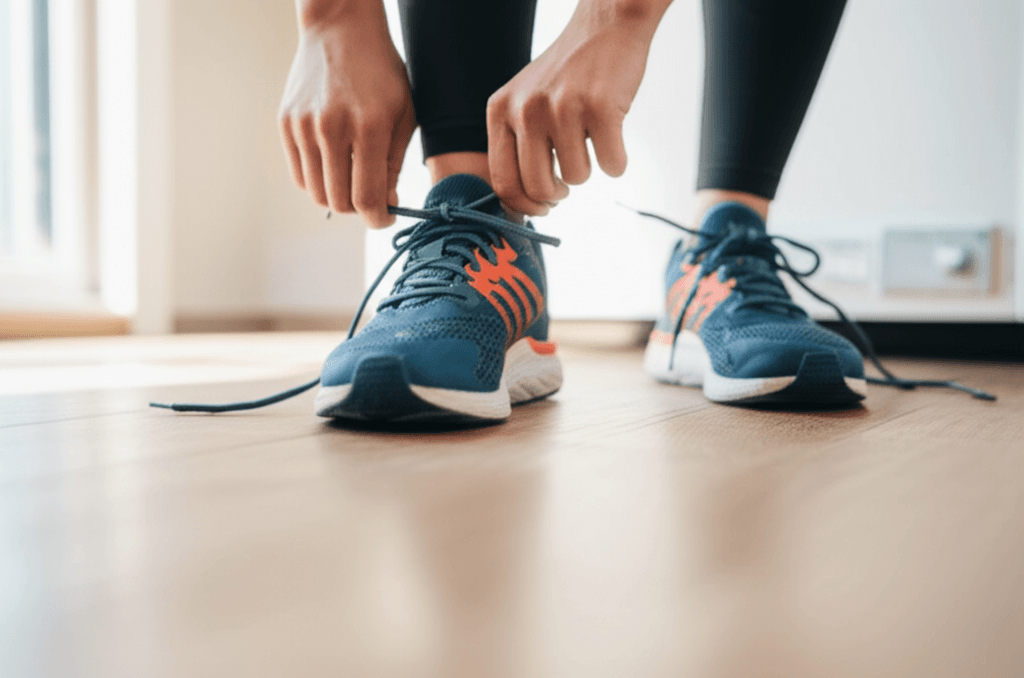
Essential Preparations Before You Begin
Before embarking on any new fitness regimen, especially if you have underlying health conditions, injuries, or are new to exercise, it’s prudent to consult with your healthcare professional. They can help ensure the plan is appropriate for your individual needs and advise on any necessary modifications.
Once cleared, consider these practical preparations:
- Appropriate Footwear: Invest in comfortable, supportive walking shoes.
- Comfortable Clothing: Wear layers that allow for movement and temperature regulation.
- Hydration: Keep water readily available before, during, and after your workouts.
- Warm-up and Cool-down: Always begin with a 5-10 minute dynamic warm-up (e.g., arm circles, leg swings, light marching) and end with a 5-10 minute cool-down (gentle stretching or easy walking) to prepare your body and aid recovery.
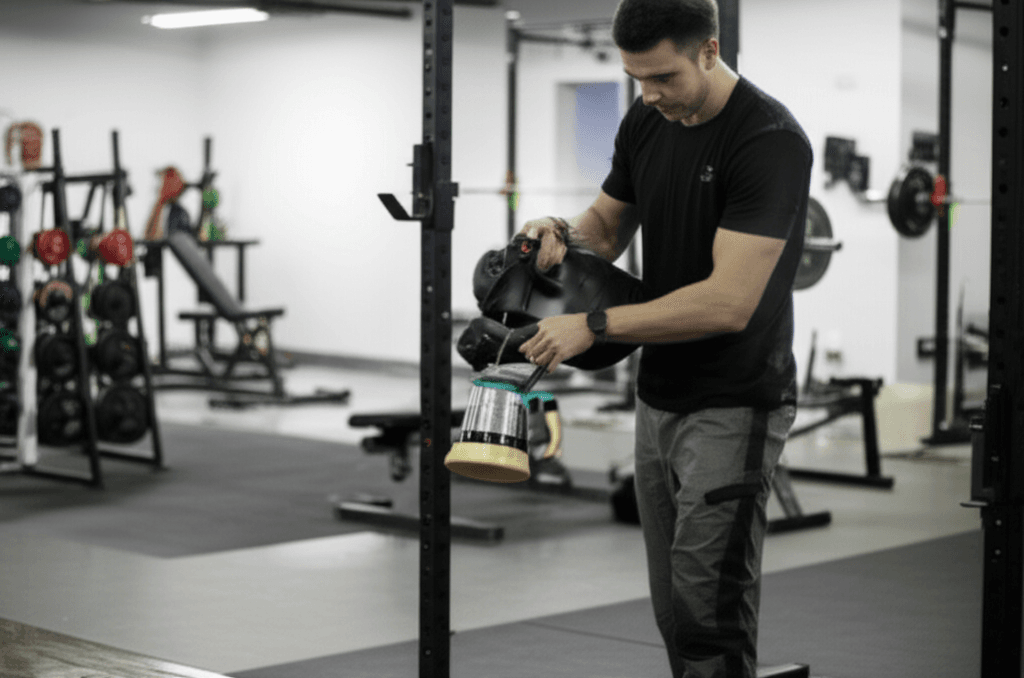
Understanding Progressive Overload for Continuous Progress
The key to long-term fitness gains and avoiding plateaus is the principle of “progressive overload.” This means gradually increasing the demands placed on your body over time. For this 30-day plan, we will apply progressive overload by:
- Increasing walking duration or intensity: Gradually lengthening your walks, picking up your pace, or incorporating inclines.
- Adding more repetitions or sets for strength exercises: Doing more of an exercise, or performing an extra round.
- Decreasing rest times: Shortening the breaks between sets or exercises.
- Increasing the difficulty of exercises: Moving from knee push-ups to full push-ups, or adding light weights as you get stronger.
Listen to your body, and don’t rush the progression. Slow and steady progress is more sustainable and reduces the risk of injury.
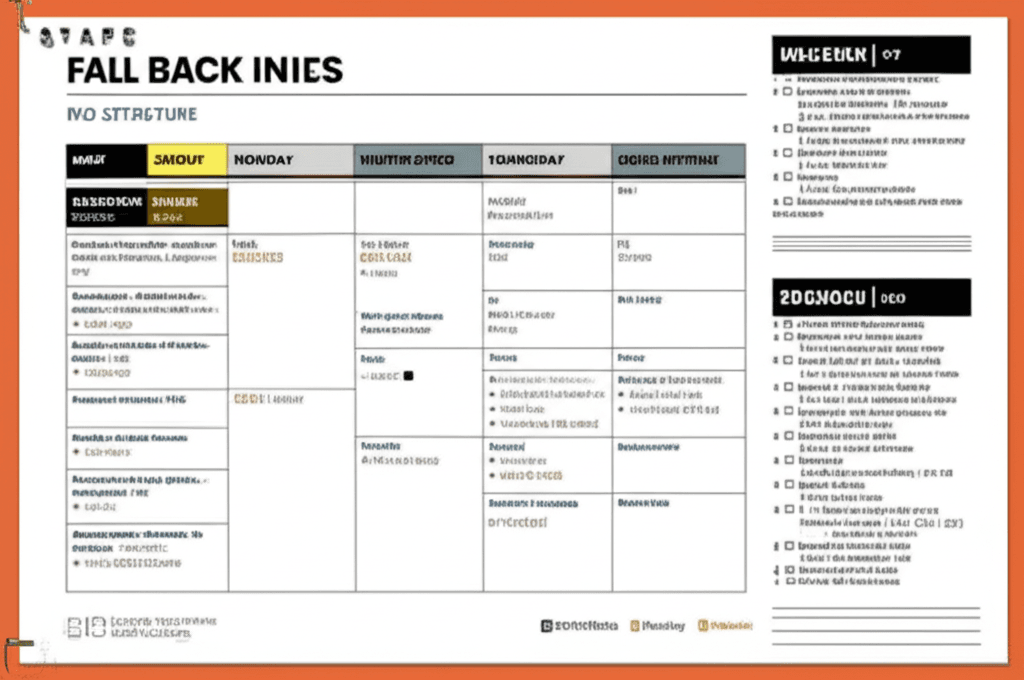
Your 30-Day Fall Back into Fitness Plan: The Structure
This 30-day plan is designed for beginners or those returning to fitness, with a focus on building consistent habits and gradually increasing your capacity. The structure includes:
- 3 Walking Sessions per week: These will progressively increase in duration and intensity.
- 3 Strength Training Sessions per week: Focusing on full-body bodyweight exercises, progressing in reps, sets, or difficulty.
- 1 Active Recovery/Rest Day per week: Crucial for muscle repair and preventing burnout.
General Weekly Flow:
- Monday: Strength Training
- Tuesday: Walking
- Wednesday: Strength Training
- Thursday: Walking
- Friday: Strength Training
- Saturday: Longer Walking Session
- Sunday: Active Recovery (light stretching, gentle stroll) or Full Rest
Remember, this is a template; feel free to adjust days to fit your schedule. The most important thing is consistency.

The 30-Day Plan: Week-by-Week Breakdown
Week 1: Laying the Foundation (Days 1-7)
The first week is about establishing a routine and mastering proper form for strength exercises. Focus on consistency and listening to your body.
- Walking (3 sessions: Tuesday, Thursday, Saturday):
- Warm-up: 5 minutes easy pace.
- Main Walk: 20-25 minutes at a brisk but comfortable pace (you should be able to hold a conversation but feel slightly breathless).
- Cool-down: 5 minutes easy pace.
- Strength Training (3 sessions: Monday, Wednesday, Friday):
- Perform 2 sets of 8-10 repetitions for each exercise. Rest 60-90 seconds between sets.
- Exercises: Bodyweight Squats (or Chair Squats if needed), Knee Push-ups, Glute Bridges, Plank (hold for 20-30 seconds), Bird-Dog.
- Warm-up: 5 minutes light cardio (marching in place, arm circles).
- Cool-down: 5 minutes stretching.
- Active Recovery/Rest (Sunday): Gentle 15-minute stroll or light stretching.
Week 2: Building Momentum (Days 8-14)
This week, we’ll introduce slight increases to challenge your body further, applying the principle of progressive overload.
- Walking (3 sessions: Tuesday, Thursday, Saturday):
- Warm-up: 5 minutes easy pace.
- Main Walk: 25-30 minutes at a brisk pace. On Saturday, try to add 5 minutes to your walk (total 30-35 mins).
- Cool-down: 5 minutes easy pace.
- Strength Training (3 sessions: Monday, Wednesday, Friday):
- Perform 2-3 sets of 10-12 repetitions for each exercise. Rest 60 seconds between sets.
- Exercises: Bodyweight Squats, Knee Push-ups (or try Elevated Push-ups if ready), Glute Bridges, Plank (hold for 30-40 seconds), Bird-Dog.
- Warm-up: 5 minutes light cardio.
- Cool-down: 5 minutes stretching.
- Active Recovery/Rest (Sunday): Gentle 20-minute stroll or light stretching.
Week 3: Upping the Ante (Days 15-21)
Challenge yourself more this week by increasing intensity and adding a set to your strength routine.
- Walking (3 sessions: Tuesday, Thursday, Saturday):
- Warm-up: 5 minutes easy pace.
- Main Walk: 30-35 minutes, aiming for a slightly faster pace or incorporating a short incline if available. On Saturday, aim for 35-40 minutes.
- Cool-down: 5 minutes easy pace.
- Strength Training (3 sessions: Monday, Wednesday, Friday):
- Perform 3 sets of 10-15 repetitions for each exercise. Rest 45-60 seconds between sets.
- Exercises: Bodyweight Squats (consider adding a pause at the bottom), Push-ups (full or elevated if ready, otherwise continue knee push-ups), Walking Lunges (5-8 per leg, each set), Plank (hold for 40-50 seconds), Glute Bridges, Crunches.
- Warm-up: 5 minutes light cardio.
- Cool-down: 5 minutes stretching.
- Active Recovery/Rest (Sunday): Gentle 20-25 minute stroll or light stretching.
Week 4: Solidifying Habits & Progress (Days 22-30)
This final week focuses on solidifying your new habits and pushing your capacity to its peak for the month.
- Walking (3 sessions: Tuesday, Thursday, Saturday):
- Warm-up: 5 minutes easy pace.
- Main Walk: 35-40 minutes. On two sessions, try to incorporate 2-3 intervals of very brisk walking (almost jogging) for 1-2 minutes, followed by 3-4 minutes of moderate pace. On Saturday, aim for 40-45 minutes.
- Cool-down: 5 minutes easy pace.
- Strength Training (3 sessions: Monday, Wednesday, Friday):
- Perform 3 sets of 12-15 repetitions for each exercise. Rest 45 seconds between sets.
- Exercises: Bodyweight Squats (or Jump Squats if appropriate), Push-ups (aim for full if possible), Walking Lunges (8-10 per leg, each set), Plank (hold for 50-60 seconds), Glute Bridges (with a 2-second hold at the top), Bird-Dog, Crunches.
- Warm-up: 5 minutes light cardio.
- Cool-down: 5 minutes stretching.
- Active Recovery/Rest (Sunday): Reflect on your progress and plan for the next steps!
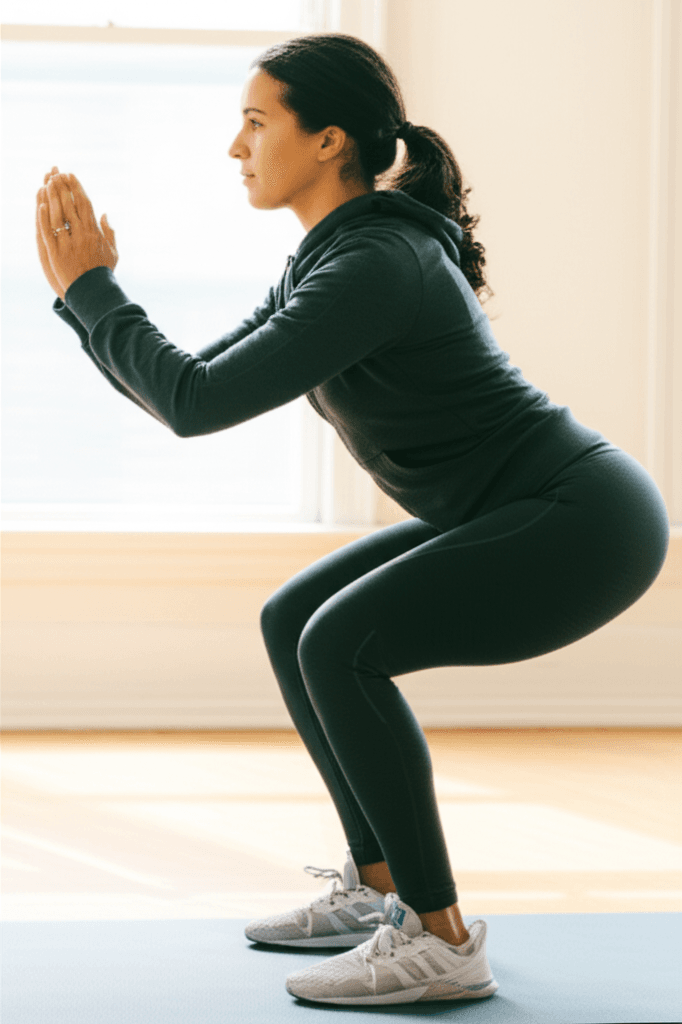
Key Bodyweight Strength Exercises for Beginners
These foundational exercises target major muscle groups and are excellent for building full-body strength without equipment. Focus on controlled movements and proper form.
1. Bodyweight Squats
- How to do it: Stand with feet shoulder-width apart, toes slightly out. Hinge at your hips and bend your knees as if sitting in a chair, keeping your chest up. Lower until thighs are parallel to the ground or as low as comfortable. Push through your heels to return to the start.
- Progression: Increase reps/sets, slow down the eccentric (lowering) phase, or try jump squats. Use a chair for assistance if needed.
2. Push-ups (Knee or Elevated)
- How to do it (Knee Push-up): Start on hands and knees, hands slightly wider than shoulder-width. Keep a straight line from head to knees. Bend elbows to lower your chest towards the floor, keeping elbows at a 45-degree angle. Push back up.
- How to do it (Elevated Push-up): Place hands on an elevated surface (like a sturdy bench or counter). The higher the surface, the easier the push-up.
- Progression: Move from knee push-ups to elevated push-ups, then to full push-ups on your toes.
3. Lunges (Walking or Reverse)
- How to do it (Walking Lunge): Step forward with one leg, lowering your hips until both knees are bent at approximately a 90-degree angle. Your front knee should be directly above your ankle, and your back knee hovering above the floor. Push off the back foot to step forward into the next lunge with the opposite leg.
- How to do it (Reverse Lunge): Step backward with one leg, lowering your hips until both knees are bent at approximately a 90-degree angle. Push off the back foot to return to the starting position.
- Progression: Increase reps/sets. Focus on balance and depth.
4. Plank
- How to do it: Start in a push-up position, then lower onto your forearms, keeping your body in a straight line from head to heels. Engage your core, glutes, and quadriceps. Avoid sagging hips or raising your rear too high.
- Progression: Increase hold time. Try knee planks or side planks to modify or challenge.
5. Glute Bridge
- How to do it: Lie on your back with knees bent, feet flat on the floor hip-width apart, and arms by your sides. Squeeze your glutes and lift your hips off the floor until your body forms a straight line from shoulders to knees. Lower with control.
- Progression: Increase reps/sets, add a hold at the top, or try a single-leg glute bridge.
6. Bird-Dog
- How to do it: Start on all fours (hands and knees), core engaged. Extend your right arm straight forward and your left leg straight back simultaneously, keeping your back flat and hips level. Return to the starting position with control. Repeat on the other side.
- Progression: Increase reps/sets, hold the extension longer, or slow down the movement.

Practical Tips for a Successful 30-Day Journey
Sticking to a new fitness plan requires more than just knowing what exercises to do. These tips will help you maintain momentum and achieve your goals:
- Set Realistic Goals and Mini-Goals: Define what “falling back into fitness” means for you. Breaking your 30-day goal into smaller, weekly or daily achievements can keep you motivated.
- Schedule Your Workouts: Treat your exercise sessions like important appointments and block them out in your calendar. Consistency is key.
- Listen to Your Body: It’s okay to have off days. If you’re feeling pain (not just muscle soreness), stop and rest. Pushing too hard too soon can lead to injury or burnout.
- Stay Hydrated: Drink plenty of water throughout the day, especially around your workouts.
- Prioritize Nutrition: Fuel your body with balanced meals that support your activity level. Focus on lean protein, whole grains, fruits, and vegetables.
- Ensure Adequate Rest: Muscles grow and repair during rest, so aim for 7-9 hours of quality sleep each night.
- Track Your Progress: Use a journal or fitness app to record your walking distances, strength reps/sets, and how you feel. Seeing your improvements can be a huge motivator.
- Make It Enjoyable: If you find yourself getting bored, vary your walking routes, listen to music or podcasts, or find a workout buddy. Cross-training with different activities can also prevent boredom and reduce the risk of overuse injuries.

Beyond 30 Days: Maintaining Momentum
Completing this 30-day walking and strength plan is a fantastic achievement, but it’s just the beginning. To maintain your progress and continue building fitness, consider:
- Continuing Progressive Overload: Keep challenging your body by increasing reps, sets, duration, or difficulty. You might start incorporating light dumbbells for strength exercises if you haven’t already.
- Exploring New Activities: Keep your routine fresh by trying new forms of exercise like hiking, cycling, swimming, or fitness classes.
- Setting New Goals: Perhaps aim for a longer walking distance, a specific number of push-ups, or simply maintaining your current fitness level.
By embracing this balanced 30-day walking and strength plan, you’re not just getting back into shape; you’re building a sustainable foundation for a healthier, stronger, and more energetic lifestyle. Commit to the journey, celebrate your progress, and enjoy the transformative power of consistent movement.


